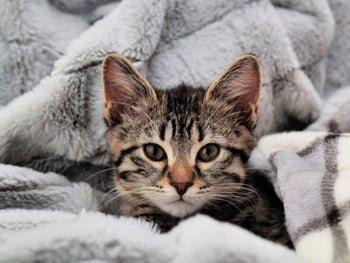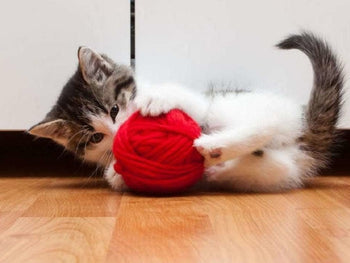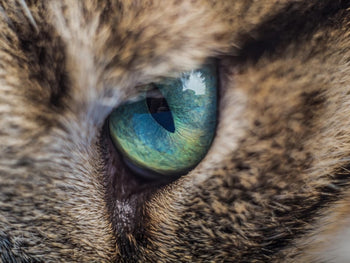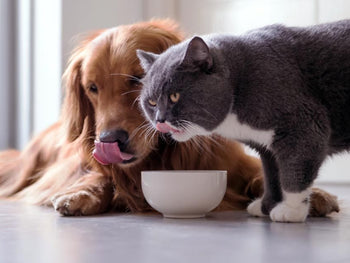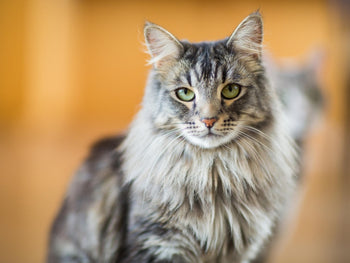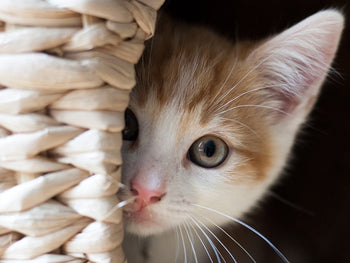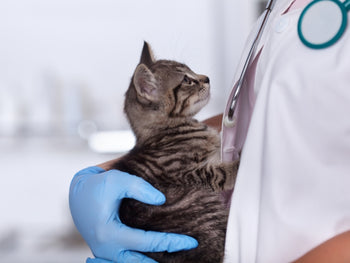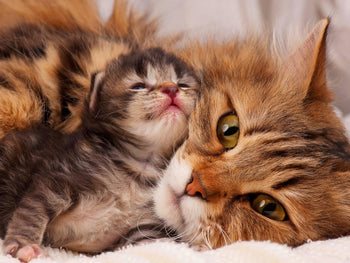
Cats are intelligent animals. They probably know how to conceal their pain. However, if their health statuses get serious, we might recognize some symptoms in the first place. There are a plethora of causes that cause cats’ poorer health condition, may be due to bacterial infection, fungus or viral attack… In these cases, we can give cats penicillin. Yet there is a question about how much penicillin to give a cat just pops up.
In fact, antibiotics are not the same as other conventional medicines. Science has shown that the use of over- or under-dosing antibiotics in both humans and animals can lead to antibiotic resistance. In other words, due to the frequent exposure to antibiotics, the bacteria become stronger and more easily resistant to the effects of the drug. That is why doctors and pharmacists are very careful when prescribing antibiotics for cats.
For more Cat's Health Guides, please visit our website.
Now let’s dig in penicillin – a branch of antibiotics, which is gained from fungus.
What is penicillin how it affects a cat’s health?

Penicillin is known as a general antibiotic. It has the ability to restrain the formation of bacteria, keep cats from getting infected from viruses and fungus. However, penicillin is not a kind of drug. This is the reason why vets always recommend us to use penicillin combined with a specific remedy. This is believed that this combination can make a valid result or against a specific infection.
Whenever joined with its broad range action and low reaction profile, penicillin is such a phenomenal decision for relieving respiratory, ear, delicate tissue, urinary tract, and skin diseases among felines.
It is regularly given through injection. Yet in a few cases, it will be injected under the skin or injected directly into the muscles. Meanwhile, the others are injected into a vein. Penicillin generates a safe wall that is against bacterial’s cell walls and prevents them from making more functional cells.
When to apply penicillin to your cat?
It isn't important to see how much penicillin to give a cat when you see something is unusual about your feline. Knowing the successful utilization of this medication is exceedingly fundamental. Its utilization on your feline is constrained to delicate tissue contaminations, ear diseases, respiratory diseases, and skin diseases.
Rarely, your cats get a remedy, notwithstanding when your veterinarian still can't seem to precisely decide the kind of contamination while sitting tight for the lab result.
On the off chance that your feline is pregnant, you may reconsider getting penicillin. Yet you can chat with your vet in regards to this issue.
Types of penicillin you need to use for your cats
There's basically a broad exhibit of penicillin in the market, consisting:
- Normal penicillin – broadly prescribed for oral contaminations, meningitis, streptococci throat.
- Penicillinase is a safe penicillin. It is usually recommended for staph diseases and manages a more slender spectrum.
- Aminopenicillin – powerful towards the annihilation of gram-negative microbes.
- Broadened-range penicillin – works similarly to aminopenicillin. However, it has a more extensive array.
Above are great choices for treating certain contamination in felines, yet amoxicillin (another kind of aminopenicillin) is prominent among the rest since it appears as a natural acid support. This implies that you don't need to take your feline to the vet for day by day shots. You can simply give one orally at home.
A brief suggestion on how much penicillin to give a cat
Now let’s come into the center of the topic. There are lots of relating factors to think about. It may include the weight, health status, age, the type of infection being cured and the severity.
For example, if your cat is 7.7 pounds, you should give her 1/3 to ½ tablet size of penicillin. In general, the cats which weigh more than 4.69 pounds often need ½ tablet size of penicillin. Remember to consult with your personal vet about how much penicillin to give a cat to avoid possible risks.
Are there potential side effects caused by penicillin?
Yes! Probably almost kinds of antibiotic can generate unexpected side effects on your four-legged friend.
- Vomiting,
- Gastrointestinal injury,
- Blood transfusion,
- Kidney and liver failure,
- Deaf - This happens when using gentamicin or amikacin.
How to give penicillin to your cat appropriately

1. Use penicillin as directed by your doctor
Do not give up or stop using the penicillin. It also causes more harm than not using penicillin in the first place. Do not use penicillin left over from previous use, unless there is a good reason and remember to consult with your doctor about this case. On how much penicillin to give a cat, watch out your cat’s health status and any allergic symptoms.
2. Choose the right kind of penicillin for the disease of your cat
This is crucial for the treatment of diseases caused by bacterial infections. But how do you know if you have used the right penicillin you need?
The veterinarian will check the infection (skin, open wound, ear, urinary tract, trachea, etc.) to determine what the bacteria is, and what penicillin can kill that bacteria best. This type of test is called Culture & Sensitivity, which is the best way to determine which penicillin to use.
Culture & Sensitivity tests are especially needed in cases where cats are sick that are not known to be caused by bacterial infections. For example, 95% of cases of cystic urinary tract infections are not caused by bacteria, although most of them are given penicillin unnecessarily. By testing, we can gradually learn how to use penicillin more wisely.
So you know how much penicillin to give a cat after reading this article. With distinctive features of different diseases, you can decide which penicillin to apply to your feline and how right the dosage to give them. Good luck!
Looking for more cat stuff? Visit Cattybox anytime you want!
